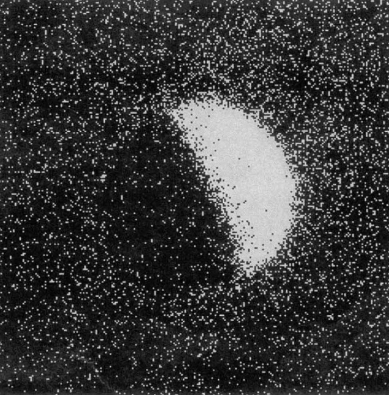Celebrating 50 years since the moonwalk
Published in Astronomy

At 10:39pm EDT on July 20th 1969, Neil Armstrong emerged from the Apollo 11 spacecraft first. A camera on the lunar module provided live television coverage of his first steps on the Moon. This is the original mission footage as aired in July 1969 (source: NASA).
This two-minute video montage shows highlights of the Apollo 11 moonwalk – the actual operations on the surface of the moon lasted for over 2 hours (the full video is available too). Astronauts Neil Armstrong and Buzz Aldrin conducted several tasks during this time, including collecting samples and setting up experiments.
What have we learned about the moon since walking on it 1969? Some highlights from our archive are below.
In an issue of Nature published on 19th July 1969, several research papers of course covered the moon, including a discussion of three possible theories on the origins of the moon and a comparison of the composition of the moon with that of Mars. Another paper identifies fault lines on the surface of the moon as evidence of volcanic activity, and compares them to the platforms at Clapham Junction Station!
In 1970, scientists reported similarities between lunar rocks and the Earth’s early crust, and a few years later orange soil was discovered on the moon during the Apollo 17 mission which led to much excitement from the on-board geologist. By 1985 a paper in Nature reported that the moon’s bulk composition appeared far less exotic than generally assumed.

This image is Figure 2 from a paper published in 1991 which describes the X-ray luminosity of the moon. The bright and dark sides of the moon are clearly visible.
A total lunar eclipse in 1993 provided scientists with an opportunity to investigate the moon’s atmosphere, and a meteor shower in 1999 meant that astronomers could detect and measure meteoroid impacts with the moon. Coming into the 21st century and the latest mass spectrometry techniques were used to evidence a watery moon interior in 2008.
One of the tasks that Armstrong and Aldrin carried out during their moonwalk was placing seismometers on the surface of the moon to record moonquakes, the data from which is still being used today. A paper published earlier this year in Nature Geoscience connects Apollo seismic data to more recent images of young fault scarps on the surface of the moon, suggesting that the moon is tectonically active and shrinking. Corresponding author Thomas Watters wrote a Behind the Paper for the community too, available here.
How will our understanding of the moon change in another 50 years?
Poster image: On July 16, 1969 Apollo 11 launched from Florida. During this historical mission, Neil Armstrong and Buzz Aldrin became the first humans to set foot on the Moon. Credit: NASA
References
Anorthosites in the Early Crust of the Earth and on the Moon
Brian F. Windley
Nature (1970)
Orange Soil from the Moon
G. M. Brown, J. G. Holland & A. Peckett
Nature (1973)
Megaregolith thickness, heat flow, and the bulk composition of the Moon
Kaare L. Rasmussen & Paul H. Warren
Nature (1985)
A soft X-ray image of the Moon
J. H. M. M. Schmitt, S. L. Snowden, B. Aschenbach, G. Hasinger, E. Pfeffermann, P. Predehl & J. Trümper
Nature (1991)
Constraints on the origin of the Moon's atmosphere from observations during a lunar eclipse
Michael Mendillo & Jeffrey Baumgardner
Nature (1995)
Optical detection of meteoroidal impacts on the Moon
J. L. Ortiz, P. V. Sada, L. R. Bellot Rubio, F. J. Aceituno, J. Aceituno, P. J. Gutiérrez & U. Thiele
Nature (2000)
Volatile content of lunar volcanic glasses and the presence of water in the Moon’s interior
Alberto E. Saal, Erik H. Hauri, Mauro L. Cascio, James A. Van Orman, Malcolm C. Rutherford & Reid F. Cooper
Nature (2008)
Shallow seismic activity and young thrust faults on the Moon
Thomas R. Watters, Renee C. Weber, Geoffrey C. Collins, Ian J. Howley, Nicholas C. Schmerr & Catherine L. Johnson
Nature Geoscience (2019)

Please sign in or register for FREE
If you are a registered user on Research Communities by Springer Nature, please sign in